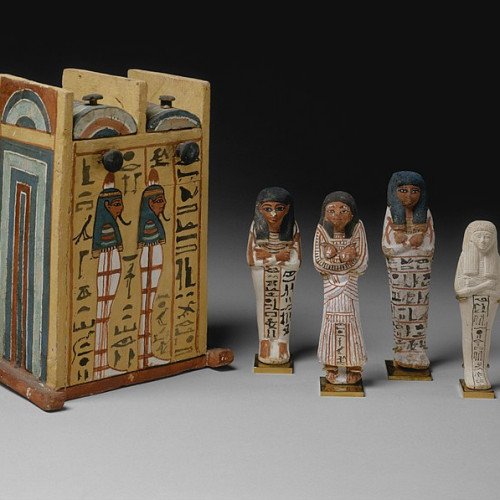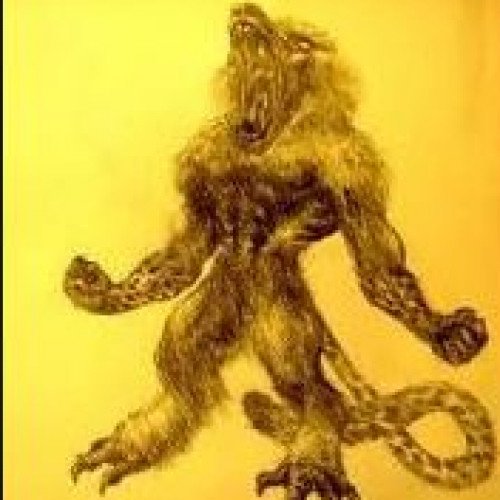Vote on Mythical creatures: Ushabti vs Tikoloshe

Ushabti
The ushabti (also called shabti or shawabti, with a number of variant spellings) was a funerary figurine used in ancient Egyptian funerary practices. The Egyptological term is derived from 𓅱𓈙𓃀𓏏𓏭𓀾 wšbtj, which replaced earlier 𓆷𓍯𓃀𓏏𓏭𓀾 šwbtj, perhaps the nisba of 𓈙𓍯𓃀𓆭 šwꜣb "Persea tree". Ushabtis were placed in tombs among the grave goods and were intended to act as servants or minions for the deceased, should they be called upon to do manual labor in the afterlife. The figurines frequently carried a hoe on their shoulder and a basket on their backs, implying they were intended to farm for the deceased. They were usually written on by the use of hieroglyphs typically found on the legs. They carried inscriptions asserting their readiness to answer the gods' summons to work.The practice of using ushabtis originated in the Old Kingdom of Egypt (c. 2600 to 2100 BCE), with the use of life-sized reserve heads made from limestone, which were buried with the mummy. Most ushabtis were of minor size, and many produced in multiples – they sometimes covered the floor around a sarcophagus. Exceptional ushabtis are of larger size, or produced as a one-of-a-kind master work. Due to the ushabti's commonness through all Egyptian time periods, and world museums' desire to represent ancient Egyptian art objects, the ushabti is one of the most commonly represented objects in Egyptology displays. Produced in huge numbers, ushabtis, along with scarabs, are the most numerous of all ancient Egyptian antiquities to survive.
Statistics for this Xoptio

Tikoloshe
In Zulu/Xhosa mythology, Tikoloshe, Tokoloshe, Tokolotshe, De'Avion or Hili is a dwarf-like water sprite. It is considered a mischievous and evil spirit that can become invisible by drinking water or swallowing a stone. Tokoloshes are called upon by malevolent people to cause trouble for others. At its least harmful, a tokoloshe can be used to scare children, but its power extends to causing illness or even the death of the victim. The creature might be banished by a pastor (especially with an apostolic calling), who has the power to expel it from the area. It is also considered a part of superstition and is often used in a satirical manner as a reference to overcome.